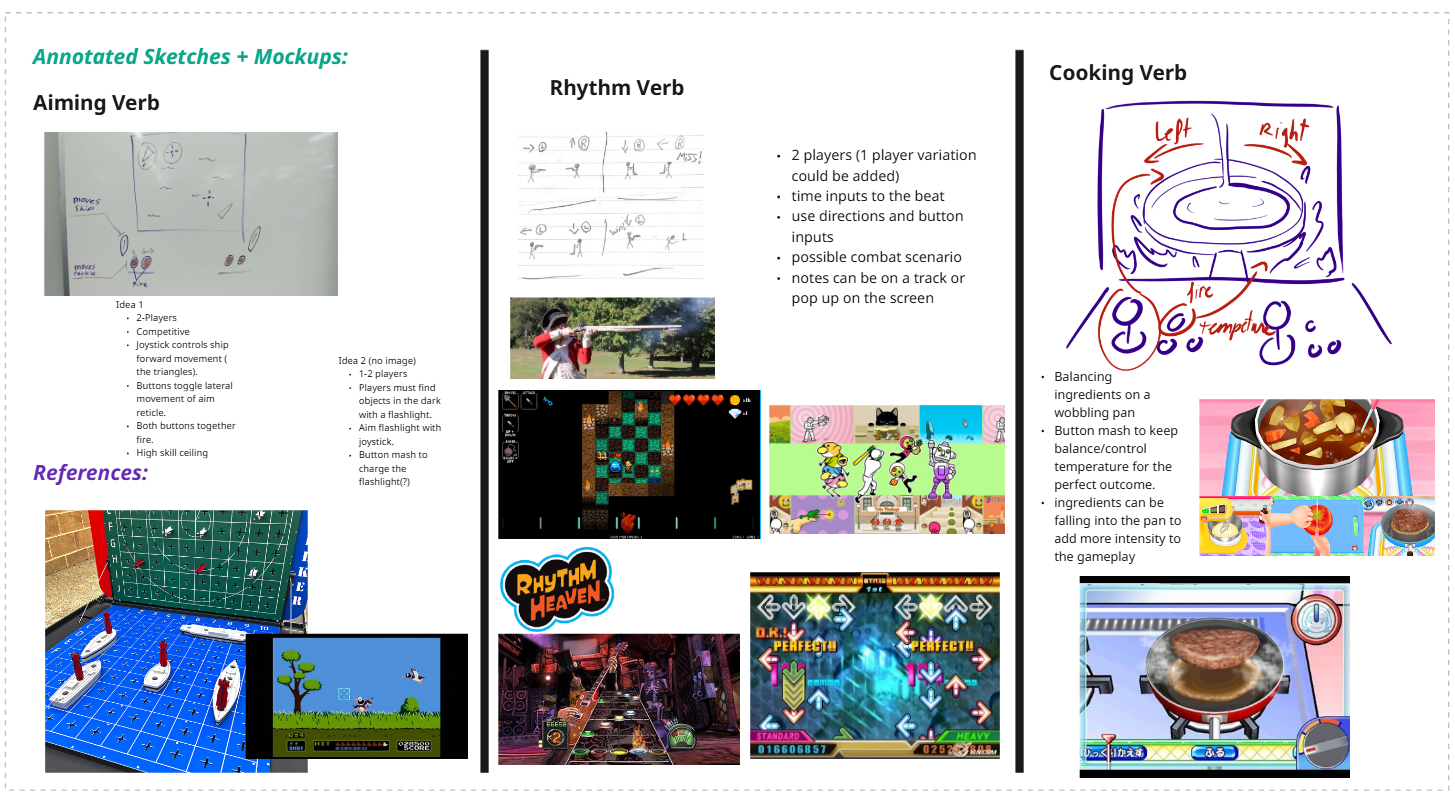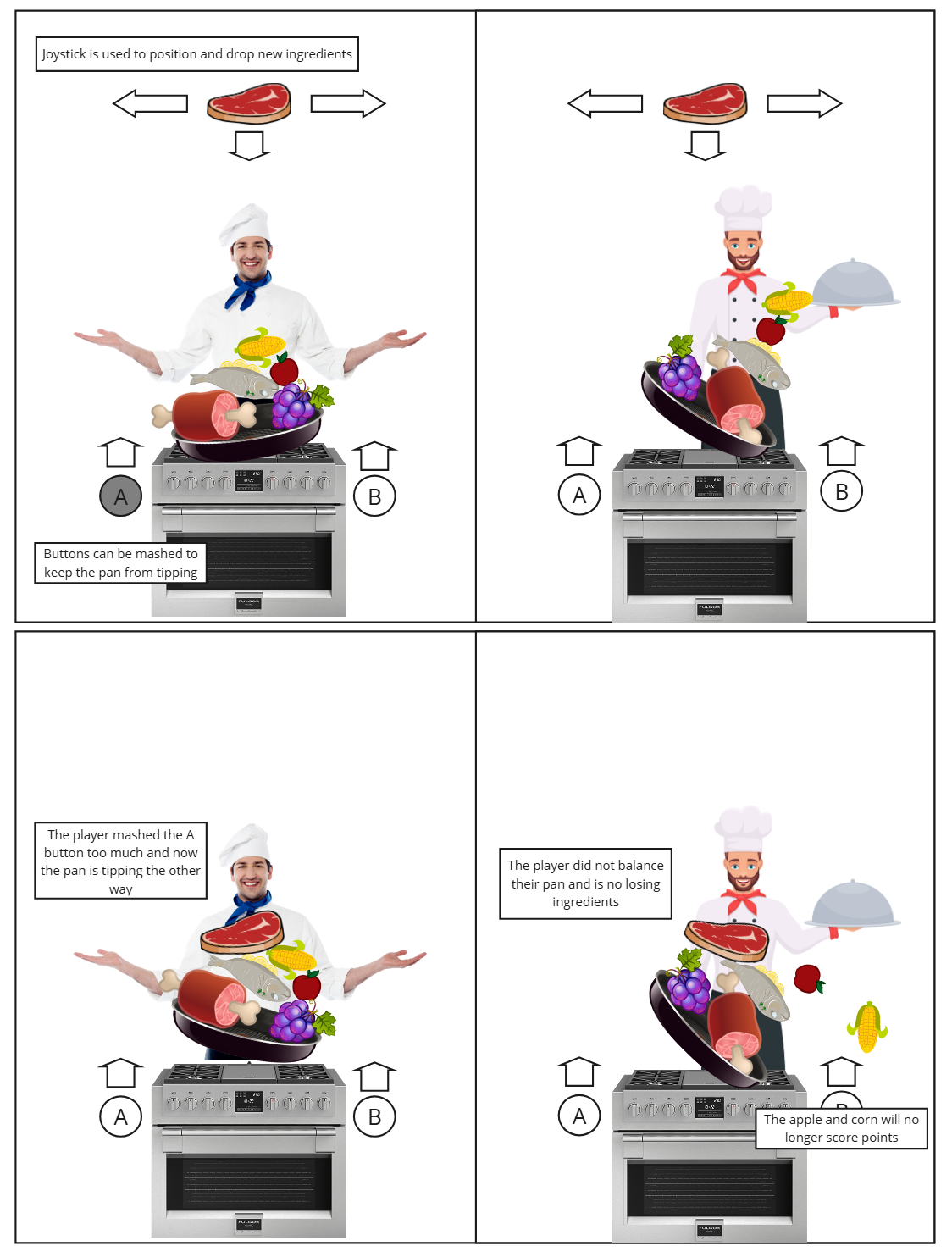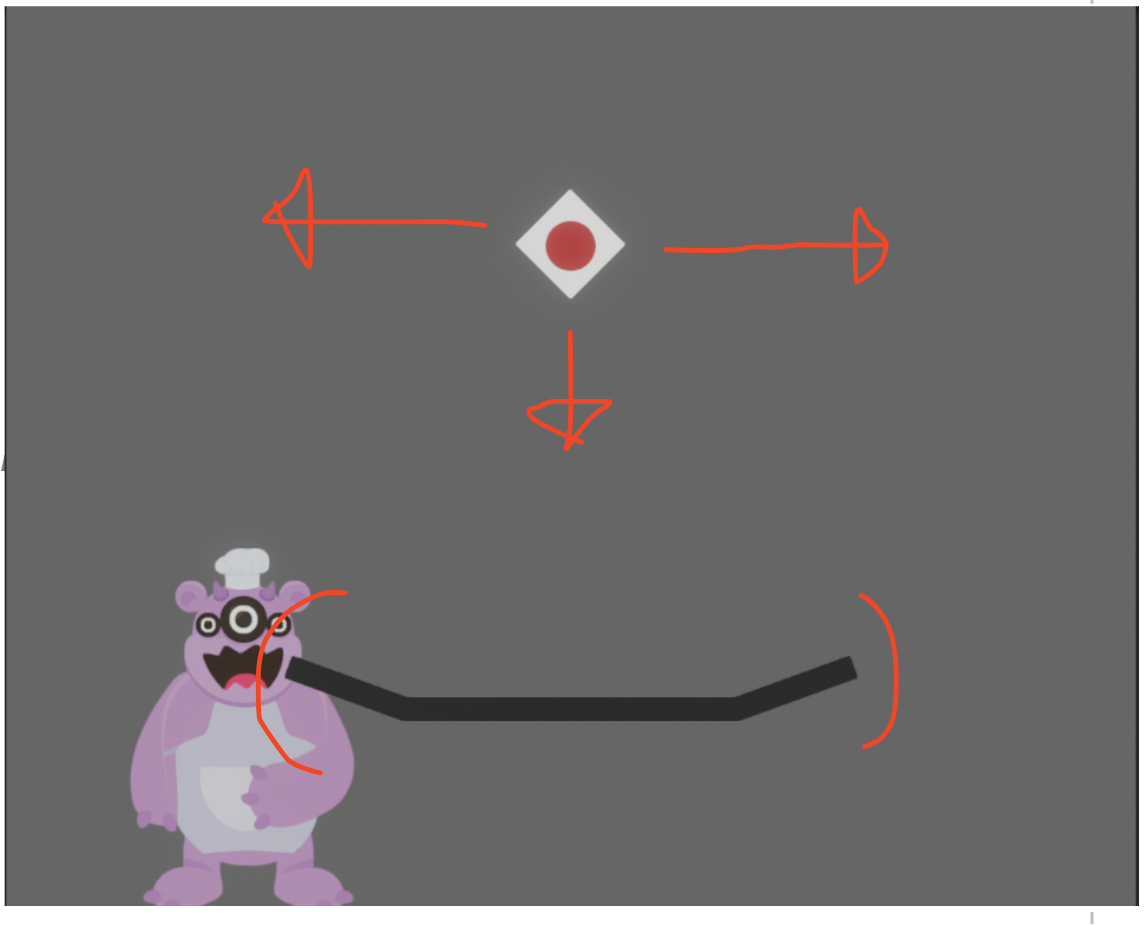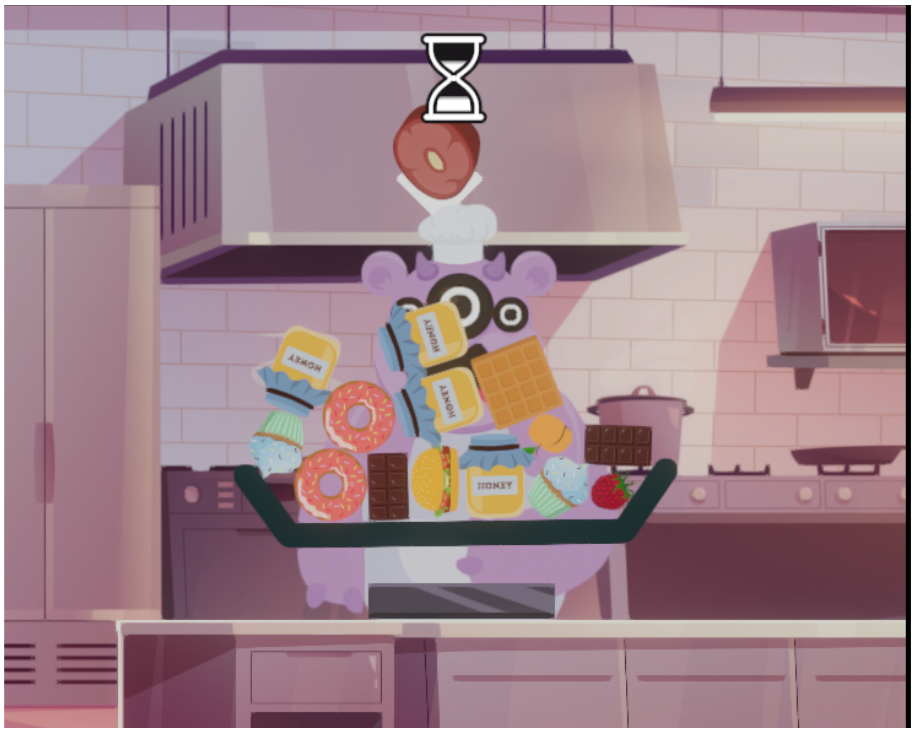Snack Stack is a micro game created for a “Design Week” challenge within the Sheridan college Honours Bachelor of Game Design program.
Design Week is a 5-day challenge held every semester where everyone in game design gets together in random teams and are a given a challenge to complete by the end of the week.
This Design Week, the challenge was to create a micro game meant to be played by either one or two players in a 60-second round. This was then ported onto an arcade machine and displayed in Sheridan College Trafalgar along with 40+ other games
______________________________________
- Project Information -
Playable with a controller and the build download below
Game Design and Team Lead.
Group of 5 Design Week Challenge.
Approximate 5 day development time.
2024.
SEE SUMMARY VIDEO BELOW!
__________________________________________________________________________________________________________
- Initial Challenges -
For this design week challenge, I was put into the unique position of being the most experienced designer on the team. With me in my third year at Sheridan, and the rest of my team being in their first or second year. This came with some unique challenges, and I took up the role of leading the team for the project, as well as being the dedicated programmer. Which also had me out of my element as someone who hadn't been sitting in a dedicated programming role on projects, let alone being the most experienced programmer on a team.
Our first task, once we got organized and the team had a grasp on the scope we will be able to accomplish, we ideated a single verb to start off with. See image below for the Miro Board, where the team was able to put together three initial ideas.

The three verbs we ideated for as a team
Afterward, the team got together and decided that the cooking verb was the most interesting and compelling for us to work on, and the next task was creating concepts. We eventually came up with four ideas, and narrowed down to two which were very similar in terms of gameplay, and this is where our verb changed to “balancing,” these two are pictured on the right. The team decided to go with the side view, the image on the right, for our concept, loosely inspired by stacking games and also the button mashing excitement of fighting games, except here you are fighting the pan.

Concept 1 with focus on a top down pan

Concept 2 with focus on side view and character

Earliest in engine version of the game
- Prototype -
I was able to give a quick crash course to another team member on some C# and unity scripting, as well as helping out when needed, so that I could focus on programming our main features. Those being a player controller to nudge the pan and the moveable drop point for food.
Later on the same day we decided on the idea I was able to put together a basic version of this in Unity with keyboard controls, but without any food spawning yet. pictured on the left.
- Sprint! -
Development was very fast once we had this initial prototype, and we were nearly complete by the end of the very next day. The artists on the team had created or sourced artwork for the entire game and aside from tweaks to the player controller and physics values, I was able to put together the food spawning system. On the final day, I was able to implement all the various items we wanted to have players balancing, all either being a heavy item or a light item based on their contextual size. While the rest of the team worked on polishing and implementing a simple scoring system and all the SFX.

Version of the game by our third day of development
- Closing Thoughts -
Snack Stack was a really fun project to work on, and I could not have asked for a better team. We were able to recognize where we had limitations, and scope really effectively for the four to five days we had to create this. For me, having to lead the team and program was a challenge at first, but we worked together effectively. I learned that leading a small team like this is best done with cooperation and the inclusion of everybody's perspectives on the project. I really made sure to have every member's ideas incorporated as best we could. Furthermore, I knew when I was needed to help the whole team make the best decision, and how to get to that decision through discussion, careful comparisons, and critical thinking.
Special thanks to Team 34, and all the professors at Sheridan who made this fantastic design challenge for the program. It was really amazing to have our work showcased in an arcade machine inside the school halls.
